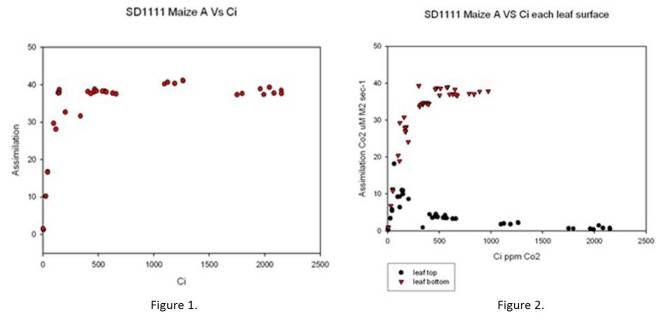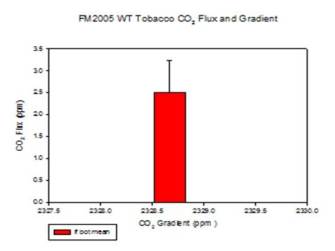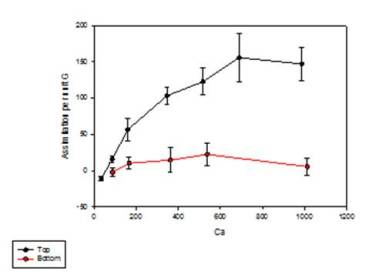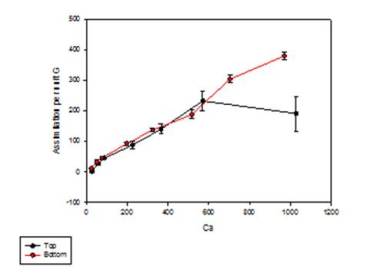Simon P Driscoll, scientist and jazz musician
Plants are sessile and must adapt to their immediate environment so there is no running away if conditions become bad. This means they have to survive a wide range of sub optimal conditions in order to produce their progeny; these conditions can be either biotic or abiotic. We were interested in water use efficiency, and as a starting point we looked at maize. We had custom built gas exchange equipment which measured photosynthesis rate by measuring the rate of carbon dioxide uptake. Commercial gas exchange systems typically have one leaf chamber and enclose one leaf analysing both leaf surfaces simultaneously. Producing data for maize like our Figure 1.
Figure 1 shows carbon dioxide on the x axis and carbon dioxide uptake on the Y axis .As we would expect from a C4 species the initial slope is very steep and then the system saturates for the given light intensity. However we built a leaf chamber which measures carbon dioxide uptake on each leaf surface, top and bottom, independently (Figure 2).
Now we can see that the two leaf surfaces are responding to the carbon dioxide increase very differently (Figure 2). Almost all the gas exchange is being accomplished by the bottom surface. The top surface value is much lower rises to a maximum and then falls almost to zero. In maize the ratio of stomata top to bottom is 0.7-0.8 so this difference in carbon dioxide uptake is much greater than the difference in stomata numbers. Having different carbon dioxide uptake and hence different water loss rates (transpiration ) does not make sense if there is free mixing of gases inside the leaf because the control at the surface would achieve nothing internally .We looked at carbon dioxide flux versus a wide range of concentration gradients (Figure 3).
C4 plants like maize have the Kranz structure which means they are more internally organised than C3 plants. It was therefore a surprise when we looked at carbon dioxide flux in tobacco leaves and found a carbon dioxide flux of 2.5 ppm for a concentration gradient of almost 2500 ppm. We looked at other C4 plants like Paspalum and found a similar pattern so it looked that assimilation of carbon dioxide was being maximised whilst water loss was being minimised. However when we looked at wheat a different story emerged (Figure 4).
In wheat almost all the gas exchange is via the top surface which is a very different strategy to every other plant we looked at why wheat is different I do not know. Having most gas exchange happening via the lower surface makes sense to me. I cannot see the advantage in having the top surface perform almost all the gas exchange. Also if you invert wheat leaf in the leaf chamber the surface which was the bottom immediately takes over the uptake of carbon dioxide. This shows it is a function of leaf orientation not a surface phenomenon. When the leaf is inverted the surface which was the bottom takes over the gas exchange (Figure 4).
Figure 5 shows that in wheat the water use efficiency is very different for the two surfaces with the top surface being more efficient following the same trend ass the assimilation.
In Maize although the surfaces have different assimilation rates they have similar water use efficiency rates which is higher than in C3 species. What is interesting is that it looks tightly controlled as the Figure 6 shows a straight line with both surfaces falling on the same line. I do not know the mechanism for this I am receptive to any ideas.





